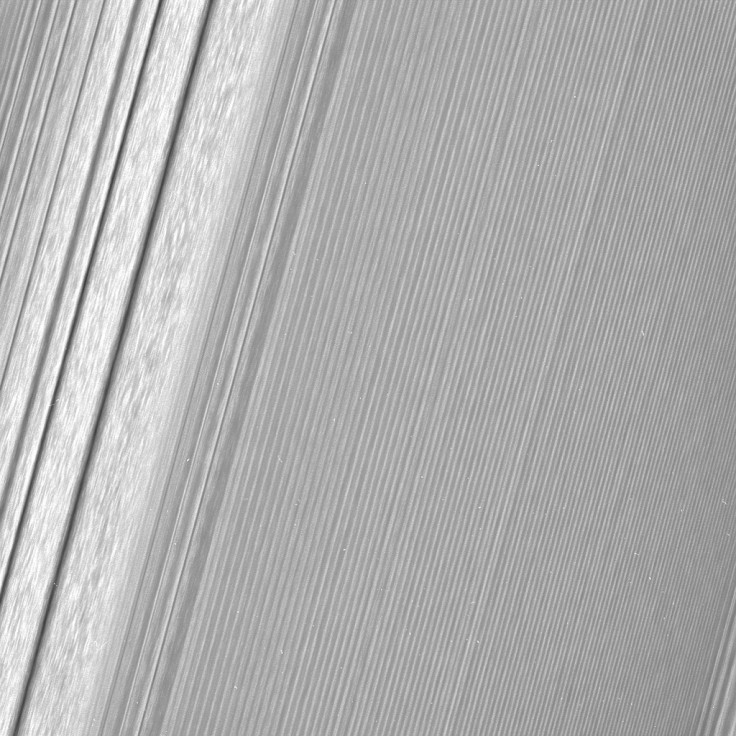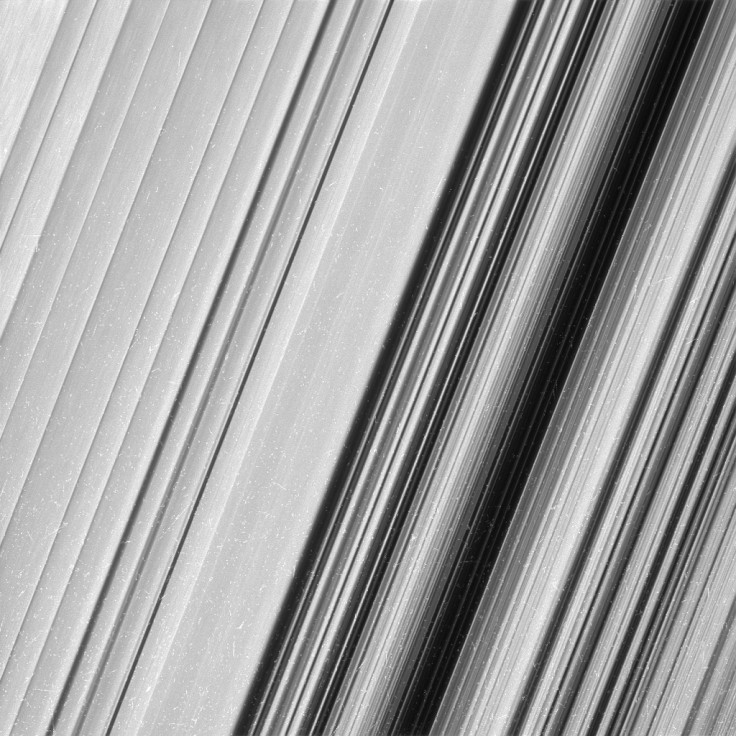Nasa's Cassini spacecraft captures stunning images of Saturn's rings in unprecedented detail
The Cassini mission will come to a halt this year but it has already greatly improved scientists' knowledge of the sixth planet from the Sun.
Nasa's Cassini spacecraft has captured stunning images of Saturn's rings of icy debris in unprecedented details. These are the closest-ever images of the outer parts of the main rings, providing scientists with new information about their features.
The Cassini mission is a joint project between Nasa, ESA (the European Space Agency) and the Italian Space Agency. It is the first in-depth, up-close study of Saturn and its system of rings and moons, which started in 1997 when the orbiter and an ESA probe were launched into space.
Seven years later, they reached Saturn, and the Cassini spacecraft became the first to orbit the planet. The mission has allowed scientists to uncover a lot about the sixth planet from the Sun and its moons, and it will come to an end this year.
Among the most important discoveries were the identification of an ocean beneath the icy crust of Saturn's moon Enceladus and liquid methane seas on another moon, Titan.
The spacecraft is now about halfway through its penultimate mission phase, which involves twenty orbits diving past the outer edge of the main ring system. This will go on until late April. During the 22 finale orbits, Cassini is set will repeatedly plunge through the gap between the rings and Saturn.

Previously, Cassini had already provided a view of the rings' features, but not in this much detail. Here, the spacecraft has viewed them at a level of detail twice as high as it had ever been observed before.
Scientists have thus now obtained the best view to date of fine details that look like straw and propellers. These are caused by clumping ring particles and minor moons embedded in the ring. The images include both the backlit and sunlit side of the rings.

The scientists responsible for Cassini are gradually gaining a deeper understanding of what they are seeing on these images, but hope to make new discoveries in the last phase of the mission.
"These close views represent the opening of an entirely new window onto Saturn's rings, and over the next few months we look forward to even more exciting data as we train our cameras on other parts of the rings closer to the planet," said Cassini scientist Matthew Tiscareno.
© Copyright IBTimes 2025. All rights reserved.






















